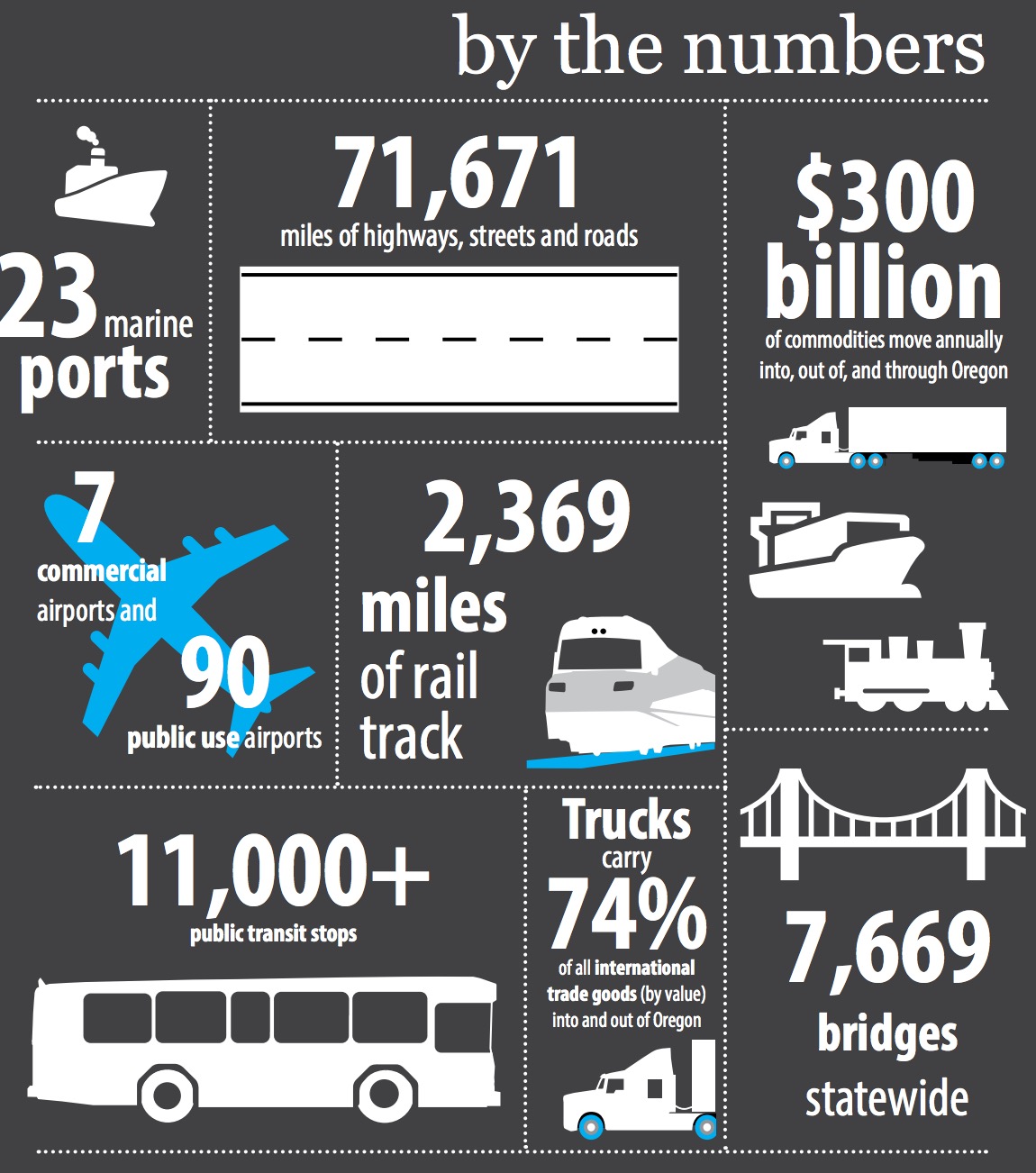STATE OF OREGON
GOVERNOR’S TRANSPORTATION VISION PANEL
Oregon’s Transportation: A History
Oregon’s transportation history is more than a recitation on concrete, steel, and iron. It is central to its people and what makes Oregon a special place. From anthropologist Luther Cressman’s 1938 unearthing of seventy pairs of 10,000 year-old sandals, to Bill Bowerman’s relentless pursuit of the perfect running shoe which led to an athletic empire, the movement of people and products has been key to our state’s legacy.
For generations, Oregonians have traveled by foot, canoe, and horse to fish, farm, and explore these great lands. The sternwheeler, steamship, and locomotive followed, transforming not only our landscape but the relative sense of distance between far-away families and communities. More recently, paved roads, cars, and freight trucks brought us even closer together and products from afar closer to home.
Today, we are on the precipice of technological changes in transportation that will likely radically alter our daily lives. Yet at the same time, we are rediscovering the value of older technologies — either on two wheels or steel wheels – and how they can better serve the needs of our modern day lives.
Oregonians have a longstanding passion for quality transportation. A “good roads” movement at the turn of the 20th Century helped to “Get Oregon out of the Mud” led by the Legislature and the State Highway Commission. Oregon has also welcomed innovators, like Samuel Lancaster, to design and build the region’s first paved highway through the Gorge. And Conde McCullough designed many of Oregon’s iconic bridges built with economy in mind and to “harmonize” with the state’s natural beauty.
The legacy of past investments and drive toward innovation has helped build a transportation system that has served as an inspiration across the country. It has given Oregonians much to be proud of, and is the foundation for future achievement. However, this foundation is deteriorating from age, heavy use, and lack of investment in maintenance, enhancement, and transportation options.
In order to create the system that will best serve our future needs, one that allows for the efficient movement of people and products in an environmentally responsible way, we must be cognizant of current challenges in today’s transportation system and we must be willing to act.
…
The panel believes that the findings outlined in this report will have a lasting and positive impact on the fabric of Oregon’s economy and security, as well as the vibrancy of our communities. We are also greatly encouraged that, from across Oregon, there is strong support for our shared transportation system and clear focus on the need to maintain the system we have today, address congestion, meet seismic needs, and make appropriate investments in transit.
We also appreciate that Oregon policymakers are deeply devoted to addressing the challenging issues facing our state today. It is our hope this report’s findings, along with the priorities identified within the regions, offer a path for immediate, mid-term, and long-term investments in our shared transportation system.
One Oregon 2045: A vision
In 2045, Oregon will have a transportation system that is in a state of good repair, largely resilient to major natural disasters, financially stable, and meets the needs of its people and its economy.
This system will support healthy and livable Oregon communities with improved access to safe and reliable transportation options, reducing reliance on a single mode. This multimodal transportation system will enhance mobility, whether Oregonians choose to travel by car, train, bus, boat, airplane, bicycle, or by foot.
Oregon will have a safe, reliable, and efficient multimodal freight network that supports Oregon’s businesses and enhances Oregonians’ quality of life. This freight network will include a marine, aviation, rail, and roadway system that meets distinct regional needs, supports urban and rural economies, and allows Oregon’s businesses to efficiently access regional, national, and international markets.
Oregon’s transportation system will have met its greenhouse gas reduction targets through strategic investments in lower carbon transportation options, such as alternative fuel vehicles and other technology innovations that also enhance safety and efficiency
The state’s transportation assets will be under appropriate jurisdictional control, and jurisdictions responsible for these assets will be accountable and garner a high level of public trust.
Download full version (PDF): A Vision for Oregon’s Transportation System
About the Governor’s Transportation Vision Panel
visionpanel.wordpress.com
The Governor’s Transportation Vision Panel is a yearlong effort to develop a series of recommendations to the Governor that address transportation issues across all modes and regions of the state. Members of the Vision Panel include legislative representatives, business owners, and civic leaders from across Oregon.







 RSS Feed
RSS Feed